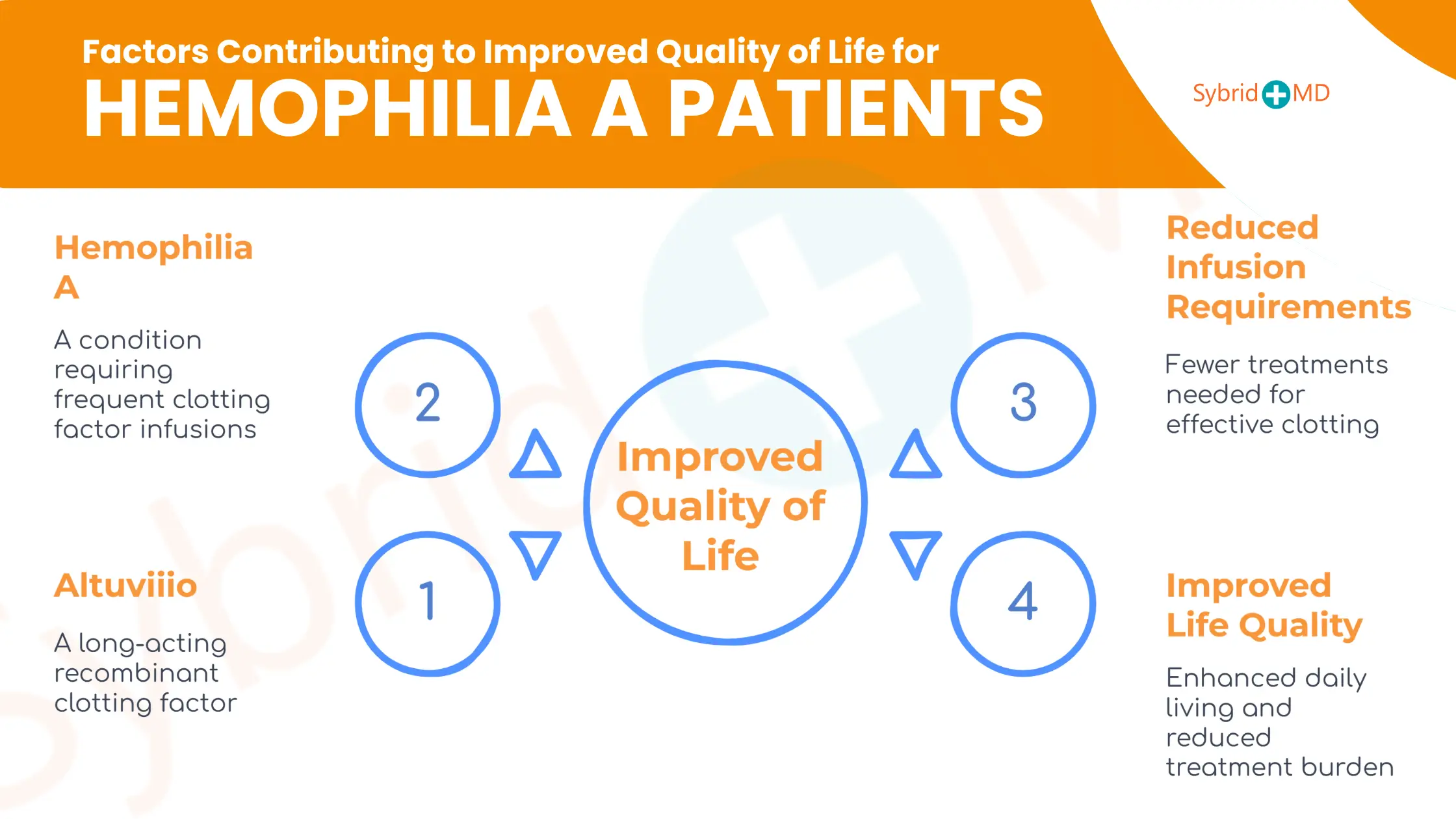The Healthcare Common Procedure Coding System (HCPCS) plays an essential role in healthcare by enabling accurate billing, insurance processing, and reimbursement because of its important place in the ever-adjusting medical field. Through the HCPCS system, healthcare providers use a standardized method to present their service procedures and products, which ensures proper reimbursement payments. Altuviiio HCPCS code stands out within this system because of its therapeutic significance for treating the rare bleeding disorder Hemophilia.
What Are HCPCS Codes?
Healthcare Common Procedure Coding System functions as a standardized coding system that describes healthcare services along with procedures and both medical equipment and medical supplies. Healthcare providers, together with insurance companies and Medicare and Medicaid, use HCPCS codes as a key system for processing reimbursements for medical services.
There are two distinct divisions within the Healthcare Common Procedure Coding System codes.
- Level I Codes: The CPT (Current Procedural Terminology) codes serve identical functions to these codes. The medical coding system kept by the American Medical Association (AMA) maintains both codes.
- Level II Codes: Medical providers use Level II HCPCS codes to report services and products which do not exist in the Level I code category. The roster of healthcare items includes durable medical equipment (DME) combined with ambulance services and drugs and numerous other healthcare-related items. Altuviiio obtains a Level II code in the Healthcare Common Procedure Coding System as it represents a pharmaceutical drug.
Why Are HCPCS Codes Important?
The following processes depend on the fundamental nature of HCPCS codes:
- The coding structure enables providers to submit claims about their services and products so insurance organizations and Medicare and Medicaid authorities can carry out proper reimbursement of healthcare providers.
- HCPCS functions as a standardized terminology that enables healthcare organizations to talk to one another easily through multiple types of health institutions and insurance entities and government departments.
- The precise application of HCPCS codes leads healthcare providers to meet requirements within federal and state rules regarding medical service reimbursement.
- Healthcare monitoring functions improve through these codes because they enable both organizations and regulatory bodies to follow medical condition spread patterns and treatment application patterns and healthcare industry developments.
What Is Altuviiio HCPCS Code?
Altuviiio stands as a recombinant clotting factor developed by Genentech for patients with Hemophilia A who lack sufficient clotting factor VIII and experience impaired blood clotting. People with Hemophilia A experience delayed bleeding with the risk of damaging their joints and causing serious bleeding inside their bodies and potentially lethal health issues.
The long-acting recombinant factor VIII therapy Altuviiio improves the life quality of patients with Hemophilia A because it offers prolonged effects through decreased infusion requirements. Hemophilia A patients need to receive many infusions of traditional clotting factor treatments to maintain useful factor VIII concentrations within their bloodstream. Altuviiio delivers extended-period effectiveness. Thus, patients need fewer infusion treatments and experience better quality of everyday life and reduced treatment responsibilities.
ALTUVIIIO serves as an antihemophilic factor (recombinant), Fc-VWF-XTEN fusion protein-ehtl for treating patients with hemophilia A primarily through its role as a recombinant factor VIII/von Willebrand factor complex. The purpose of this medical product is to minimize bleeding occurrences both in routine life conditions and surgical treatments.
1. Clinical Indications
ALTUVIIIO serves as prophylaxis for reducing bleeding episodes in adults and children with congenital factor VIII deficiency (hemophilia A) as well as treatment for bleeding needs on-demand and coverage during surgical procedures for both adults and children with factor VIII deficiency7. Treatment of von Willebrand disease is outside the recommended uses for ALTUVIIIO.
2. Mechanism of Action
ALTUVIIIO functions as a treatment by replacing the required factor VIII protein, which serves as a crucial element in the blood clotting process. Recombinant factor VIII nourished into blood circulation enables clotting activation which supports in blocking bleeding severity episodes. The extended-release nature of the formulation differentiates Altuviiio from all existing similar treatments.
3. FDA Approval and Clinical Indications
The FDA granted Altuviiio approval as a medical treatment for Hemophilia A patients. Use of the medication occurs during bleeding events as an on-demand therapy or as a preventive measure to stop bleeding episodes. Altuviiio offers extended performance which benefits patient recovery and reduces difficulties in controlling Hemophilia A.
4. Manufacturer and Administration
Altuviiio’s entire production cycle follows numerous strict manufacturing regulations. Altuviiio emerges from recombinant DNA technology manufacturing, which involves gene insertion into CHO cells to generate therapeutic protein products. After cell cultivation and harvest, the procedure results in purified factor VIII, which becomes the basis for the drug formulation. It is administered intravenously. ALTUVIIIO is available in different potency levels from 250 IU to 4000 IU which are provided in single-dose vials for reconstitution37.
5. Altuviiio J Code
ALTUVIIIO possesses the J7214 HCPCS code, which health insurance organizations use for billing purposes. The HCPCS code J7214 describes “Injection, factor VIII/von Willebrand factor complex, recombinant (ALTUVIIIO), per Factor VIII IU”
6. Comparison with Other Treatments
ALTUVIIIO represents a leading option in Hemophilia A therapies because its extended half-life originates from its Fc fusion technology. Medical science developed the Fc fusion technology because it maintains drug activity in the blood longer, thus enabling less frequent infusions than traditional factor VIII administration. Simple and frequent administration of Altuviiio results in reduced visits to hospital facilities as well as decreased treatment duration, which ultimately enhance the patients’ general well-being
7. Billing and Coding Information
- HCPCS Code J7214: The HCPCS code J7214 specifies billing for ALTUVIIIO during administration. The correct application of this code must be checked with both payers and Medicare fiscal intermediaries before use1.
- NDCs: ALTUVIIIO contains various National Drug Codes which represent different drug strengths. These include 71104-0978-01, 71104-0979-01, 71104-0981-01, 71104-0982-01, 71104-0983-01, and 71104-0984-0113.
- ICD-10-CM Code: The ICD-10-CM code D66 applies for patients who display hereditary factor VIII deficiency
The Role of HCPCS Codes of Altuviiio in the Healthcare System
The United States healthcare industry adopts HCPCS Level II codes as a way to identify pharmaceutical items, including Altuviiio, for billing procedures. The healthcare community can use these standardized codes to secure payment for providing drugs along with their services. Claim processing at insurers and Medicare and Medicaid government programs depend upon these codes to reach accurate results.
The HCPCS code of Altuviiio functions as a significant reference system for healthcare practitioners who require it to bill insurance providers. Standardization through this process enables healthcare providers to receive reimbursement for their services together with the drug costs.
Interpreting the HCPCS Code for Altuviiio
The HCPCS code that identifies Altuviiio specifically depends on the exact drug formulation along with dosage specifications. Through the HCPCS code system, the treatment finds its proper medical category for payments to be processed by insurers. The billing process for Altuviiio requires a clear comprehension of the HCPCS code because its reimbursement and cost determination can become complex like other pharmaceuticals.
Challenges in HCPCS Coding and Reimbursement
The healthcare industry faces continuous updates as an important challenge for HCPCS coding systems specifically in pharmaceuticals. Any newly established treatment requires the development of corresponding new codes to represent it. Proper reimbursement of Altuviiio depends on correct HCPCS code assignment because inadequate coding leads to delayed reimbursements, including cases of missing or unclear treatment classification codes. Health insurers require knowledge about the code and its effects to avoid delaying or denying insurance claims when processing them.
The Impact of Altuviiio and HCPCS Coding on Patients and Providers
Improving Accessibility for Patients
The advancement provided by Altuviiio in treating Hemophilia A treatment stands out but access to the therapy remains a primary issue. Altuviiio provides extended drug function benefits which benefit patients yet its high cost remains expensive. The reimbursement process achieves better efficiency through the HCPCS code yet the supply of the drug remains an essential challenge in healthcare settings particularly those serving underprivileged areas. To make Altuviiio therapy accessible to patients healthcare professionals must team up with group health insurance providers. Future healthcare providers will gain increasing significance in patient education about treatment finances as coding procedures develop and the drug gains wider acceptance.
Impact on Healthcare Providers
Provider organizations must maintain complete awareness about the new HCPCS code for Altuviiio since they need to maintain updated billing practices. The precise use of appropriate drug codes at drug administration determines practice or hospital financial well-being. Healthcare providers need to monitor alterations in both reimbursement policies and procedural codes of the drug.
Conclusion
HCPCS code for Altuviiio is not just a critical part of the healthcare reimbursement process; it also plays a significant role in ensuring accessibility, affordability, and the smooth administration of treatment for patients suffering from Hemophilia A. Altuviiio, developed by Genentech, represents a remarkable advancement in the treatment of this complex genetic disorder, offering a long-acting recombinant factor VIII therapy that greatly improves patients’ lives by reducing the frequency of infusions needed to manage the condition.
For healthcare providers, the proper understanding and application of HCPCS codes, such as the one designated for Altuviiio, are essential for ensuring that patients receive timely and accurate reimbursement for their treatments. Healthcare’s operational efficiency depends on this coding system since it provides clear communication and supports access to innovative patient treatments between providers, government organizations, and insurers.
FAQs:
What is HCPCS code E0240?
The medical code E0240 describes a “pressure-reducing support surface, low air loss, mattress, with pump” as a healthcare device. Under the Level II HCPCS codes, the pressure-reducing support surface mattress is classified as durable medical equipment.
What is HCPCS code E0627?
The medical classification system HCPCS includes E0627, which identifies the continuous positive airway pressure (CPAP) equipment used in obstructive sleep apnea treatment. The HCPCS code E0627 consists of both the device and its required components, including tubes and filters, and a power supply cable. Healthcare providers write prescriptions for sleep apnea patients to obtain billing payment through this code for CPAP machines. The Medicaid program includes DME (Durable Medical Equipment) as one of its classification points.
What is HCPCS code C2617?
The HCPCS code C2617 refers to a stent, non-coronary, temporary, without a delivery system. The healthcare community uses code C2617 to file billing statements during temporary non-coronary stent procedures.
What is HCPCS code J2371?”
The HCPCS code J2371 refers to an injection of phenylephrine hydrochloride, 20 micrograms. Phenylephrine hydrochloride administration by injection needs the usage of billing code J2371.


